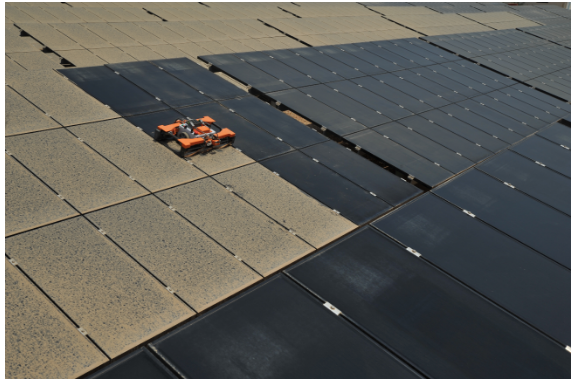The arid, dusty regions of the world present a great opportunity for solar energy – often pairing consistently high irradiation with large areas of land that have few other practical uses. But such regions also present a challenge in the form of harsh weather conditions and dust particles that can badly affect the performance of a PV system.
Soiling has been well studied as an issue affecting PV performance, and project operators today have a wealth of tools available to clean modules in the field and to calculate the best time to do this, based on the balance between lost energy yield and the cost of a cleaning cycle. While these mostly focus on the direct losses caused by dust blocking light from the module, however, soiling is also known to play a role in some mechanisms that cause more permanent performance loss to PV systems in the field.
A group of scientists led by Mohamed First University in Morocco conducted a one-year study of soiling on modules in the field. The group installed crystalline silicon and cadmium telluride PV modules at a site in Ben Guerir, Morocco. The installation consisted of two modules for each technology, one of which was cleaned daily, and one which was left to accumulate dust and dirt.
As expected, the study showed that soiling effects are most damaging during the driest periods of the year. The group also found that the cadmium telluride modules were less affected by soiling related losses – they peaked at a 13% daily performance loss, while silicon modules reached 15%.
The scientists described the results of the study in “Experimental study on the impact of soiling on the modules temperature and performance of two different PV technologies under hot arid climate,” which was recently published in Heliyon. They also found that the modules affected by soiling ran at higher temperatures. The group suggested a module to calculate soiling effects on module temperature and efficiency at a given location, and said that conducting further studies in different climates would help to further increase the accuracy of the module.
This content is protected by copyright and may not be reused. If you want to cooperate with us and would like to reuse some of our content, please contact: editors@pv-magazine.com.




2 comments
By submitting this form you agree to pv magazine using your data for the purposes of publishing your comment.
Your personal data will only be disclosed or otherwise transmitted to third parties for the purposes of spam filtering or if this is necessary for technical maintenance of the website. Any other transfer to third parties will not take place unless this is justified on the basis of applicable data protection regulations or if pv magazine is legally obliged to do so.
You may revoke this consent at any time with effect for the future, in which case your personal data will be deleted immediately. Otherwise, your data will be deleted if pv magazine has processed your request or the purpose of data storage is fulfilled.
Further information on data privacy can be found in our Data Protection Policy.